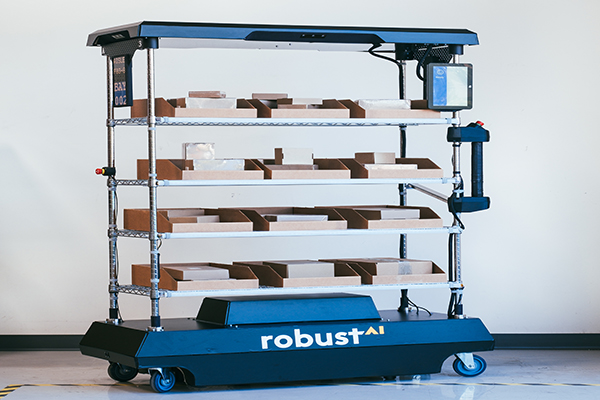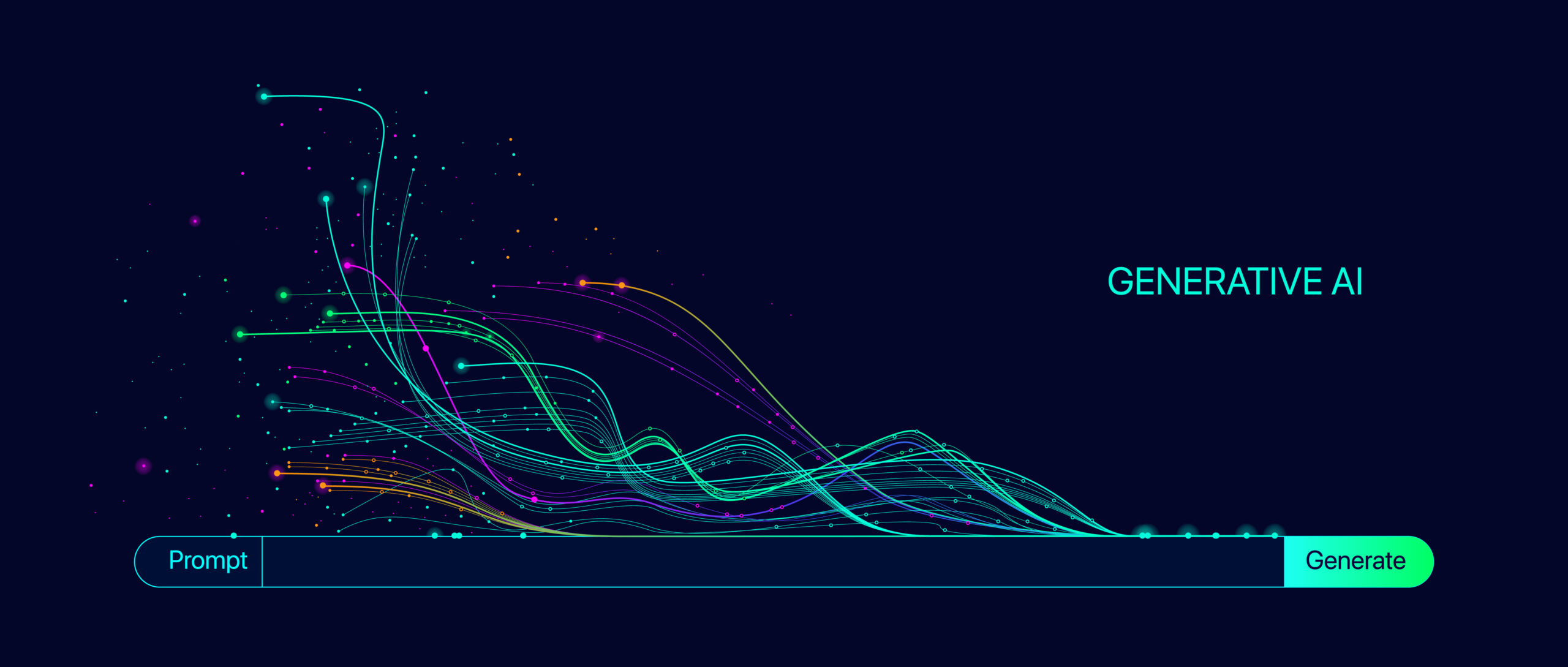
AI-generated summary
This article explores the transformative rise of Embodied Artificial Intelligence (AI), a branch of AI that integrates digital intelligence into physical systems designed to collaborate with humans rather than replace them. Highlighting insights from Leila Takayama, a human-robot interaction expert, the article underscores how Embodied AI has evolved from specialized, rigid factory tools to accessible, adaptable, and user-friendly systems across various industries like logistics, healthcare, and education. Advances such as machine learning and natural language interfaces now enable even non-experts to train and customize robots, exemplified by Robust.AI’s Carter—a warehouse robot combining intuitive human control and automation to enhance safety and efficiency. The democratization of AI and modular robot designs further broaden adoption, allowing smaller enterprises and sectors like agriculture to benefit from these technologies.
The article also challenges the assumption that humanoid robots are always the ideal solution, noting that practical, task-focused designs often work better in real environments. Takayama emphasizes that Embodied AI aims to augment human abilities by reducing physical strain, automating repetitive tasks, and improving workplace accessibility rather than displacing workers. Success hinges on designing robots that prioritize human comfort, trust, and ease of use, ensuring they serve as collaborative partners. Ultimately, Embodied AI’s future depends on creating technology shaped by and for people, fostering inclusive, flexible, and effective human-machine partnerships that enhance everyday life.
AI no longer just generates text or images—it now interacts with the physical world. Leila Takayama explores the challenges and opportunities of Embodied AI at the Future Trends Forum
This article has been translated using artificial intelligence
Artificial Intelligence (AI) is no longer just a digital tool—it’s stepping into the physical world. This breakthrough, known as Embodied AI, is transforming how humans interact with technology. From industrial robots to autonomous home assistants, Embodied AI is designed to collaborate with people, not replace them.
At the Future Trends Forum hosted by Fundación Innovación Bankinter, Leila Takayama—human-robot interaction expert and Vice President of Design at Robust.AI—shares a clear perspective on the evolution of Embodied AI and its real impact on society. With years of experience in robotics, from her work at Hoku Labs to leading the design of interactive robots, Takayama emphasizes a key insight: the success of Embodied AI is not just about the technology—it’s about the relationship we build with it.
You can watch Leila Takayama’s talk here:
The Evolution of Embodied AI: More Accessible, More Collaborative
Embodied Artificial Intelligence (AI) has undergone a massive transformation in recent years. Once limited to highly specialized tools performing specific tasks in tightly controlled environments like factories, these systems are now becoming more accessible, adaptable, and collaborative—thanks to advances in AI and robotics.
One of the most significant shifts lies in how people interact with and train these systems. Programming a robot used to require advanced engineering and coding skills. Today, with the integration of machine learning and natural language interaction, even non-technical users can teach Embodied AI systems new tasks.
Leila Takayama highlights how this evolution is opening the door for more industries and communities to adopt the technology. Workers across various sectors can now customize robots to meet their specific needs. This adaptability makes Embodied AI highly effective in diverse environments such as logistics, healthcare, and education.
In industry, for instance, collaborative robots—known as cobots—are designed to work alongside humans, not replace them. These cobots can be quickly retrained through simple demonstrations or voice commands, learning new tasks on the go without requiring complex setup processes. The result: increased productivity and a lower barrier to automation for companies that lack in-house robotics experts.
A recent example of this shift is Carter, a robot developed by Robust.AI to boost efficiency in warehouses and logistics centers. Unlike fully autonomous systems, Carter allows operators to interact with it intuitively—they can manually steer it simply by grabbing the handlebars, as they would with a regular warehouse cart. This blend of automation and human interaction not only eases physical strain but also enhances workplace safety. According to Takayama, Carter’s design is inspired by familiar tools, making it easier for workers to adopt and trust the technology.

Source: Robust.AI
Another key factor in this evolution is the democratization of physical AI. What was once the domain of large corporations with deep tech resources is now within reach of smaller companies and under-resourced sectors. Takayama notes that this shift is enabling adoption in areas like agriculture, where farmers can use drones or support robots without needing to be tech experts.
The rise of modularity is also driving change. Robots used to be built for single functions with little room for adaptation. Today, open platforms and interchangeable modules allow systems to be reconfigured as needs evolve. This means machines can be upgraded rather than discarded, extending their lifecycle and improving long-term efficiency.
In short, Embodied AI is moving toward a more inclusive, flexible, and human-centered paradigm. No longer confined to rigid environments, these systems are designed to adapt dynamically to the real-world needs of the people who use them. It’s a shift from closed-task programming to technology that can learn and grow alongside its users.
The Humanoid Robot Myth: Is It Really Necessary?
For decades, robotics has pursued the goal of replicating human form and behavior. But according to Leila Takayama, that approach doesn’t always make sense.
“We’re fascinated by humanoid robots, but that doesn’t mean they’re the best solution to every problem.”
Takayama points to the case of PR2, a highly advanced manipulation robot developed at Willow Garage. Despite its technical capabilities, it underperformed in home environments:
- It was expensive and difficult to maintain.
- It damaged carpets, frightened pets, and tripped over unexpected obstacles.
- It was not intuitive for people unfamiliar with robotics.
This example reveals a critical insight: robotics should not focus on mimicking humans, but on designing systems that efficiently meet real human needs. In many cases, a discreet system—such as an exoskeleton or a bodyless smart assistant—may be far more effective than a robot with arms and legs.
The Impact of Embodied AI on the Future of Work
A central question in the AI debate is its impact on jobs. The fear that robots are here to replace humans is common—but Takayama offers a different perspective:
“When people ask me if robots are going to take our jobs, I say: spend a day with one and see if you’re still worried. They’re tools, and their abilities are very different from ours.”
Rather than eliminating jobs, Embodied AI has the potential to:
- Reduce physical strain in sectors like construction and manufacturing, lowering injury risks.
- Automate repetitive or hazardous tasks, allowing humans to focus on creative and strategic work.
- Make work more accessible for people with reduced mobility or disabilities, thanks to intuitive and adaptive interfaces.
This vision aligns with the United Nations Sustainable Development Goal (SDG) 8: promoting decent work and sustainable economic growth. The key is not replacement—but collaboration.
Human-Robot Interaction: The Key to Success
For Embodied AI to be truly useful, its design must center on how people feel when interacting with it. Takayama warns that developers often prioritize technical sophistication over user experience:
“One of the biggest mistakes we make in robotics is designing technically impressive things that people don’t want to use.”
A robot can be fast and precise—but if it causes discomfort or distrust, it won’t be widely adopted. That’s why it’s crucial to ensure that:
- Robots are easy to understand and use—even for non-technical users.
- They adapt to human environments, not the other way around.
- They’re seen as collaborators, not threats—building trust and encouraging social acceptance.
Takayama leaves us with a clear message: Embodied AI should not be built to replace humans, but to enhance our capabilities. The success of these systems will depend on how well they integrate into everyday life, learn from us, and work alongside us.
If we want a future where Embodied AI improves our quality of life, we must design it with interaction, accessibility, and real-world usefulness in mind. Above all, these technologies should be shaped by the people who use them—not just by those who build them.



